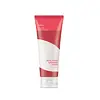What's inside
What's inside
 Key Ingredients
Key Ingredients

 Benefits
Benefits

 Concerns
Concerns

No concerns
 Ingredients Side-by-side
Ingredients Side-by-side

Water
Skin ConditioningKaolin
AbrasiveGlycerin
HumectantBentonite
AbsorbentCetearyl Alcohol
EmollientCaprylic/Capric Triglyceride
MaskingCetyl Ethylhexanoate
EmollientSalicylic Acid
MaskingCharcoal Powder
AbrasiveRheum Palmatum Root Extract
AstringentZingiber Officinale Root Extract
MaskingPanthenol
Skin ConditioningTocopheryl Acetate
AntioxidantButyrospermum Parkii Butter
Skin ConditioningMannitol
HumectantSorbitan Stearate
EmulsifyingCitric Acid
BufferingMicrocrystalline Cellulose
AbsorbentPolysorbate 60
EmulsifyingHydroxypropyl Methylcellulose
Emulsion StabilisingPolyacrylate Crosspolymer-6
Emulsion StabilisingSodium Polyacrylate Starch
AbsorbentPotassium Hydroxide
BufferingPhenoxyethanol
PreservativeCI 77891
Cosmetic ColorantWater, Kaolin, Glycerin, Bentonite, Cetearyl Alcohol, Caprylic/Capric Triglyceride, Cetyl Ethylhexanoate, Salicylic Acid, Charcoal Powder, Rheum Palmatum Root Extract, Zingiber Officinale Root Extract, Panthenol, Tocopheryl Acetate, Butyrospermum Parkii Butter, Mannitol, Sorbitan Stearate, Citric Acid, Microcrystalline Cellulose, Polysorbate 60, Hydroxypropyl Methylcellulose, Polyacrylate Crosspolymer-6, Sodium Polyacrylate Starch, Potassium Hydroxide, Phenoxyethanol, CI 77891
Rosa Damascena Flower Water
MaskingGlycerin
HumectantWater
Skin ConditioningMethylpropanediol
SolventBetaine
Humectant1,2-Hexanediol
Skin ConditioningSodium Hyaluronate
HumectantTrehalose
HumectantDextrin
AbsorbentRosa Gallica Flower Powder
Skin ConditioningGlyceryl Polymethacrylate
Glycine
BufferingSerine
MaskingSodium PCA
HumectantSorbitol
HumectantAlanine
MaskingArginine
MaskingThreonine
Proline
Skin ConditioningGlutamic Acid
HumectantLysine
Skin ConditioningRosa Canina Fruit Oil
EmollientPhellodendron Amurense Bark Extract
Skin ConditioningTheobroma Cacao Seed Extract
AntioxidantPolyglyceryl-10 Laurate
Skin ConditioningGeranium Maculatum Oil
MaskingTromethamine
BufferingXanthan Gum
EmulsifyingCarbomer
Emulsion StabilisingEthylhexylglycerin
Skin ConditioningDisodium EDTA
Rosa Damascena Flower Water, Glycerin, Water, Methylpropanediol, Betaine, 1,2-Hexanediol, Sodium Hyaluronate, Trehalose, Dextrin, Rosa Gallica Flower Powder, Glyceryl Polymethacrylate, Glycine, Serine, Sodium PCA, Sorbitol, Alanine, Arginine, Threonine, Proline, Glutamic Acid, Lysine, Rosa Canina Fruit Oil, Phellodendron Amurense Bark Extract, Theobroma Cacao Seed Extract, Polyglyceryl-10 Laurate, Geranium Maculatum Oil, Tromethamine, Xanthan Gum, Carbomer, Ethylhexylglycerin, Disodium EDTA
 Reviews
Reviews

Ingredients Explained
These ingredients are found in both products.
Ingredients higher up in an ingredient list are typically present in a larger amount.
Glycerin is already naturally found in your skin. It helps moisturize and protect your skin.
A study from 2016 found glycerin to be more effective as a humectant than AHAs and hyaluronic acid.
As a humectant, it helps the skin stay hydrated by pulling moisture to your skin. The low molecular weight of glycerin allows it to pull moisture into the deeper layers of your skin.
Hydrated skin improves your skin barrier; Your skin barrier helps protect against irritants and bacteria.
Glycerin has also been found to have antimicrobial and antiviral properties. Due to these properties, glycerin is often used in wound and burn treatments.
In cosmetics, glycerin is usually derived from plants such as soybean or palm. However, it can also be sourced from animals, such as tallow or animal fat.
This ingredient is organic, colorless, odorless, and non-toxic.
Glycerin is the name for this ingredient in American English. British English uses Glycerol/Glycerine.
Learn more about GlycerinWater. It's the most common cosmetic ingredient of all. You'll usually see it at the top of ingredient lists, meaning that it makes up the largest part of the product.
So why is it so popular? Water most often acts as a solvent - this means that it helps dissolve other ingredients into the formulation.
You'll also recognize water as that liquid we all need to stay alive. If you see this, drink a glass of water. Stay hydrated!
Learn more about Water